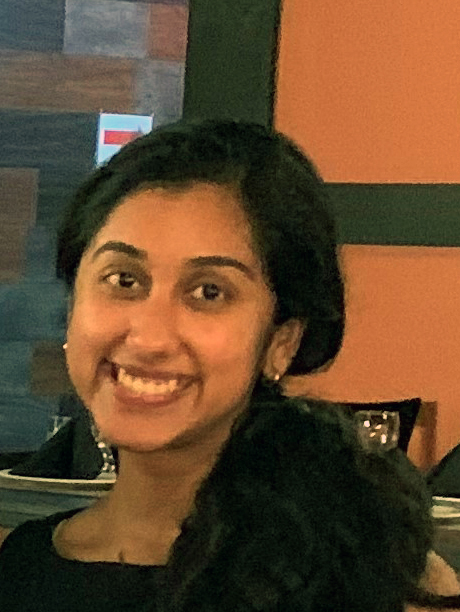
Even before Janani Comar was enrolled in an eight-year-long Medical Scientist Training Program in New York City, she said she had her doubts about whether she’d finish the curriculum.
Of course, that was in retrospect, as in May of this year she completed her Master’s Degree in Religion at Illinois prior to accepting an offer from the University of Toronto to enroll this fall in its Doctor of Philosophy Program in the Department for the Study of Religion.
Janani had enrolled in the medical scientist program at Albert Einstein College of Medicine, located in the Morris Park neighborhood of the Bronx. After a year she decided to go in a different direction. “It wasn’t really what I wanted to be doing,” she said. She took a one-year leave of absence.
Meanwhile she applied to various MA humanities programs, including University of Illinois, since her hometown is Downer’s Grove. However, she recalls, she had no idea about the humanities or how to pay for them, and was wary of taking out loans.
This was especially true because Janani’s bachelor’s degree was from the California Technological Institute—better known as Caltech—where students receive employment by working in labs. She also was a teaching assistant there, teaching biology and running group discussions.
She was accepted by the U of I Department of Religion and enrolled in the Fall of 2017. She says she had no idea about many subjects, including Hinduism, and was “surprised at all the perspectives” in the field of religion. Given her background in science and math (she attended the Illinois Math and Science Academy in Downer’s Grove prior to attending Caltech), she said she didn’t know how to write a paper or how to take information and form it into an original argument. “This was a new way of thinking for me.”
On the other hand, the performing arts had long been a part of Janani’s experience. She began dancing at age six, specifically, classical Indian dancing. Even while she pursued her master’s in religion Janani moved along with a graduate minor in dance through the Department of Dance at Illinois. “Dance elicited a part of me that academics didn’t,” she said, namely, movement and performance. She regularly performs and has two dance teachers in India, where she goes twice a year—winter and summer—to train.
Janani explained that as an Indian-American, dance is part of a long community tradition surrounding performance. “There’s always been a love for movement in general.”
“I grabbed onto it in a very different way,” beginning as an undergraduate “and now more so here.”
‘Here’ is the University of Illinois, where Janani is struck by how much more diverse the student body is compared to Caltech, for example, where the academic emphasis was narrower and fewer students held jobs in addition to attending college.
Her interests in performance and religion have evolved to guide her toward some of her research interests as well. She became interested in caste and performance of caste after watching an intriguing dance work on the saint Nandanar, a venerated Tamil deity part of the Shaiva Hindu sect. Nandanar is the only Dalit ("untouchable") saint among the Nayanars, a group of 63 saints from the 6th to 8th centuries whose stories and songs depict their deep love and devotion to the god Shiva.
Janani explained how in Nandanar’s 12th century we learn how Nandanar transcended his caste limitations to gain spiritual liberation (‘mukti’) and be one with Shiva. In the 20th century, social reform movements in Tamil Nadu questioned the caste system and sought to eradicate discriminatory practices. Several prominent writers used Nandanar’s story to explore how the social and religious realms interact and clash with one another.
Janani said that Professor Jessica Birkenholtz gave her excellent feedback about writing and “how to get ideas out,” plus advice on how to structure writing and provide original ideas from source material. Additionally, being a teaching assistance and evaluating undergraduates’ writing has helped Janani sharpen her own writing by giving advice to her students.
In her four semesters at Illinois, Janani has twice taught Asian Mythology and World Religions, which both satisfy general education requirements. These are popular courses, with multiple sections capped at 25 to 30 students, respectively.
Her ultimate goal is to be a professor and a performer—to continue her research and her love of classical Indian dance. “I might even teach dance on the side,” she notes. As for teaching, she looks forward to designing her own courses.
Following the completion of her master’s at Illinois, Janani received offers from the University of Toronto and the University of Chicago. After some soul searching, she chose Toronto. She said it was a difficult decision, but for someone who’s already arrived at many such disparate crossroads and changed directions, Janani has proven she’s adaptable and able to keep her focus on the larger picture to attain her goals.
By Rick Partin